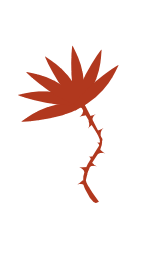
It’s awesome when a dungeon module knows to be terse, knows when to be quiet, knows to leave things out.
But the elided material has to be wallpaper. A dungeon that doesn’t provide stats and numbers is beyond useless.
Scarlet Citadel is an example of a really bad book with pages and pages of wallpaper (I guess good if you really love Northlands but then the layout formatting is still bad) you have to sit through (here are five pages about why this door went missing three hundred years ago) but extremely vague about what’s actually there (half a sentence saying “send some undead after them”).
Date of Expiration, which we’re doing now in #boatmode’s S -team, is a perfect example of a really good and usable book. We dislike the fluff (robots & naked chicks) but this guy gets UX and gets the blorb principles and gets varied and interesting room design, so we’re having a fantastic time.
You wanna how how many golden wires they can pull loose in a room? There’s a rule for it. They find a witch? She’s described in like two sentences and a picture.
Well, she’s a witch (which in our campaign means she’s a sha’ir), she hands out blood pacts like they’re candy (which in our campaign means that she is pacted to the blood moth), she looks a li’l bit weird in the picture (which in our campaign means she’s got efreeti heritage—how did a genasi of the plane of fire end up pacting herself to a being from the elemental plane of blood?—and idea of an “elemental plane of blood” is itself an artifact from how The Temple of the Blood Moth, another, similarly skeletal module, got adapted to #boatmode’s focus on the elemental planes), she uses a ring to defend herself (which in our campaign means that wielding it probably looks similarly to the circulatory sword from Temple Of The Blood Moth) and so on and so on. Everything gets braided together.
The villages on The Isle of Dread? They’re commected to specific animals—just like the al-Badia houses in our setting, so that’s what they are.
I’ve complained about the “leave blanks” principle in Dungeon World but I’m realizing that it’s all about leaving the right kind of blanks.
Dyson’s Delve became such a rich experience because of our setting’s deep connection to the Gods of the Cold Elements. We don’t have tribe-bashing but since it’s so light on backgrounds, it’s easier to swap goblins for pirates than something like Scarlet Citadel’s dwarves where it very specifically needs to be dwarves which really stood out weirdly in our game’s more “all followers of the Loregiver ultimately get along” setting.
And, when a book is skeletal and usable, like Dyson’s Delve, Date of Expiration, Temple of the Blood Moth, and some of the fantastic stuff from the appendixes of Ghosts of Saltmarsh (where Dyson strikes again), the players (maybe subconsciously) notice how well the game flows, how little “umm let me just read this page” downtime there is, and how easily it can be skinned to tightly connect to the actual setting. That crate of “Common Sense with Hakiyah” books aboard the Sea Ghost kept showing up again and again. Whereas stuff from Ghosts of Saltmarsh proper (vaguely described sauhagin fortress run, kinda railroady octopus fight) or from an all wallpaper, no salience book like Scarlet Citadel, it’s just not fun for them to be there. They can tell without even looking at the books! Good UX helps everyone at the table.
“In a cloud, bones of steel” is the way, as Charles Reznikoff put it in his poem.
You need bones for the characters to actually interact with. Stats, number appearing, traps, how secret doors work, if it’s light or dark.
You also need a little bit of detail. A few sentences. That circulatory sword did come from Temple Of The Blood Moth, that endless bag of gold did come from Hot Springs Island, that magical sword of the God of Cold Air did come from Dyson’s Delve. And stuff from Date of Expiration will in turn have an impact on future stuff in and around our version of the Crowded Sea.
The rest can be much more suggestively and sparse. A cloud. Mist from our game will drift in there and settle and become very real dew drops.